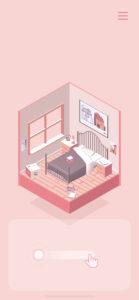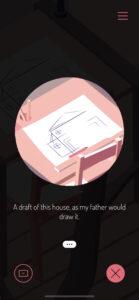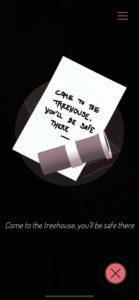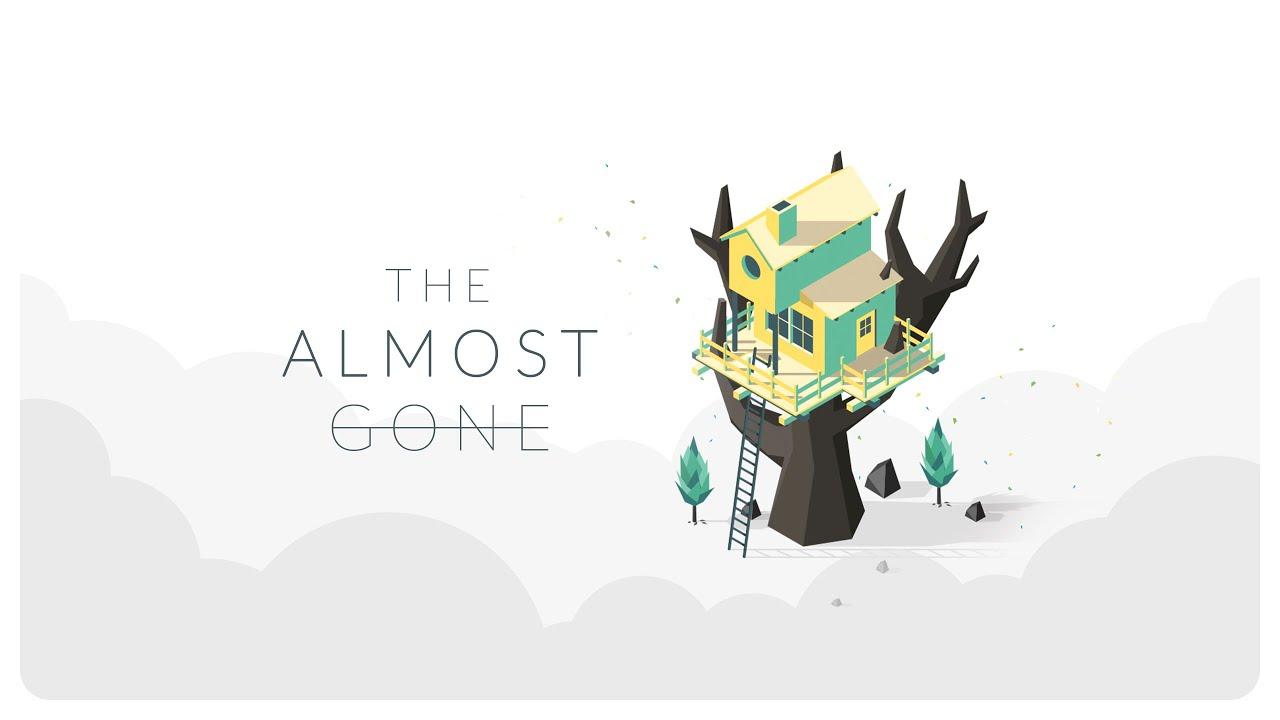The Almost Gone is a mystery, narrative, explorative game that follows a young girl’s spirit as she finds her way to the afterlife. This puzzle game allows players to investigate a series of 3-dimensional rooms and complete puzzles to unlock new facts about the girl, her family, and unlock new rooms to explore. This single player game was developed by Happy Volcano and was released in 2020, and is hosted on a number of digital platforms including the Nintendo Switch, Windows, iOS, macOS, and others. Due to its mature themes, this game is oriented towards players who are 16+. Ultimately, The Almost Gone utilizes the mechanic of free-form exploration in a 3-dimensional space and subtle puzzle hints to unlock the underlying game’s narrative, and allow players to progress slowly through the game.
The Almost Gone employs a unique mechanic of free-form exploration in a 3-dimensional, 3rd-person POV setting for players to solve puzzles, allowing them to progress slowly through the game. As seen below, the game is uniquely presented in a 3-dimensional space, where users can quite literally scroll through the room to explore it from a far-away, third person POV.

In this way, players can explore the room freely in this unique perspective, where they gain a high level understanding of the room structure. As seen below, clicking on certain aspects of the room allows players to gain more context about the player we are playing as, as we explore what seems to be there home. As seen below, clicking on different items in the room allows players to unlock new aspect of the game narrative, such as the player’s relationship to their father, or how they spend their time.



Although players are allowed this closer look at the room itself, most of the game progresses in this zoomed-out, spatial representation of the rooms that the player is exploring. Players can rotate the room with their finger to see the room more fully and the different objects contained within them. Because of the lack of clear guidance from the game itself, players explore through these various rooms to find clues, hints, and solve puzzles. This is quite different from traditional narrative puzzle games such as escape rooms or Portal, where players’ point of view are directly in the room themselves, and can directly interact with objects in the room by picking them up, for example. This game intentionally makes the spatial rooms quite disconnected from the player, which is consistent with the narrative of the girl being a spirit, although players don’t find this out until later. Ultimately, these mechanics contribute to this puzzle game acting as an embedded narrative, where players are motivated to explore the room to reconstruct past events and artifacts and spaces are used to communicate information to players. Overall, these free-exploration aspects of the game made player prioritize exploration on top of puzzle-solving, especially since there was no explicit instructions provided to the player.
The Almost Gone also uses very subtle puzzle hints to allow players to solve the puzzle, relying on trial and error as well as player experimentation to lead players to solving the puzzle. The very first puzzle presented gave a subtle hint to users that they should be searching for a handle, as seen below:


Upon solving the puzzle by finding the handle, as seen above, players receive a piece of paper that allows the player to unlock a part of the narrative, as well as receive an item that could possibly help them solve the next puzzle; however, this isn’t explicitly mentioned. As seen below, the next puzzle is presented exactly as such, where there are no instructions on how to solve the puzzle.

I as a player had to spin the globe, randomly clicking on the seeming buttons on the globe to start figuring out how to solve the puzzle. Through this, I was able to realize that I must press the two correct buttons to “unlock” the globe, and then explored the multitude of rooms to find the correct constellations to press, one of which is presented below:
As seen above, even discovering parts of the puzzle allows players to unlock parts of the narrative, as seen above, where players discover more about the player and her dad’s relationship. As aforementioned, many of these puzzles come with little to no guidance, where there are no explicit instructions from the game itself on how to proceed. This is quite different from many traditional puzzle games, such as Resident Evil 4, or Storyteller, which gives the users explicit clues on how to best proceed in the puzzle. In this game, the hints themselves are embedded within parts of the game instead of a centralizes “goals” or “next steps” menu, where exploration is absolutely necessary to proceed forward. This reinforces this game’s embedded narrative, where artifacts communicate information to players, and the game structure makes it so these artifacts must be explored. As a player, playing this puzzle game without these explicit instructions made the game pace must slower than most puzzle games. Due to the lack of context, I was forced to explore every nook and cranny of each of the 6 rooms I had access to to find hints on how to solve puzzles. Hence, the game is structured with very subtle clues such that players cannot progress through the game quickly, but must instead take the time to uncover more and more about the narrative to solve the puzzle.
Overall, The Almost Gone is a mystery game with a compelling and unique structure that allows players to truly engage with the narrative and its nuances. Because of this free-form exploration and subtle hints, the gameplay was focused on players’ exploration of the spatial aspects of the game, and the gameplay was drawn out due to the puzzle-solving and exploration acting hand in hand. Overall, my initial critiques of the game is that it feels almost a little too unguided, where it was often quite difficult to solve the given puzzles, and even after solving a puzzle, it was unclear on how to proceed next: the game wouldn’t explicitly let you know when a new room was unlocked, but rely completely on player exploration to progress the game forward. In addition, it was often quite confusing to navigate the separated rooms within the overall space and understand their relationship to one another, but perhaps this was an intentional aspect of the game that lends to the narrative as players play more. Overall, The Almost Gone is a very unique mystery game that prioritizes the game’s narrative and player’s curiosity to unlock puzzle and progress slowly and thoroughly through the game.




